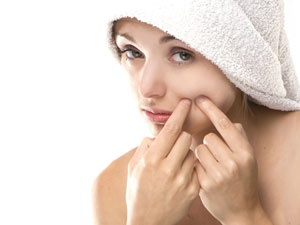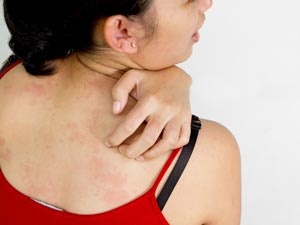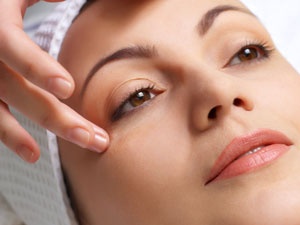Photographs: Courtesy LifeMojo.com Courtesy LifeMojo.com
When you're worrying about a skin problem like acne or a mole, there may be more to it than meets the eye. Here is a list of signs your skin gives you as an indicator of your overall health.
Every teenager knows how painful skin problems can be. But did you also know that skin problems can act as an indicator of your health and wellness?
From moles to skin discolouration, there's a lot more going on with skin that is indicative of an impending problem. This visual diagnosis of problems is an ancient Eastern medicinal technique that is in practice even today. Practitioners just have to look at your face and skin and they know the problem.
So here is a list of signs which indicate that there may be more to them:
Yellow skin
Having a yellow-orange skin tone can be the result of hypothyroidism -- an underactive thyroid gland -- leading to increased levels of beta-carotene (an antioxidant found in fruits and vegetables) in the blood. A problem with the thyroid gland means that it doesn't metabolise the antioxidant as quickly, leading to accumulation of beta-carotene.
Beta-carotene can also build up if you are eating too many carrots, sweet potatoes, squash and drinking too much carrot juice. But along with yellow skin, if the colour of your eyes also has a yellowish hue, then it could be a sign of liver disease.
is one of the most trusted sources of information about good health and wellness. To those who want to manage their health themselves, LifeMojo provides necessary information, tips, tracking tools and support to help them stay informed and motivated.
A pale complexion
Photographs: Courtesy LifeMojo.com
Pale skin can indicate anemia, which occurs due to a lack of iron to make enough haemoglobin. Haemoglobin is responsible for the transportation of oxygen from the lungs to the rest of the body.
Dark lines on the palms
Photographs: Courtesy LifeMojo.com
Dark lines on the palm, or a deepening of the pigment in the creases of the palms can mean adrenal insufficiency, an endocrine disorder.
Also known as Addison's disease, this disease mainly affect women and men aged between 30 and 50 years.
Brown patches on the shin
Photographs: Courtesy LifeMojo.com
If the front of your legs along the shins starts to develop brown spots or little spider veins, which eventually start to bleed, then it is a sign of diabetes. Velvety plaques around the neck and/or armpit also suggest diabetes.
Purple spots
Photographs: Courtesy LifeMojo.com
If you see purple spots on the skin, those are broken blood vessels, and can occur due to circulation problems or deficiencies of Vitamin C (scurvy). These purple spots are often mistaken for a bruise, but they tend to take longer to wear off.
A red, butterfly-shaped rash on the face
Photographs: Courtesy LifeMojo.com
A red, butterfly-shaped rash, usually over the bridge of the nose and the cheeks, is often the first sign of the autoimmune disease Lupus, which is a life-threatening disorder that requires prompt treatment. It could also be rosacea or contact dermatitis.
Acne
Photographs: Courtesy LifeMojo.com
Although acne is a common problem in teenagers, in some women it can be an indicator of polycystic ovary disease, or PCOS. Such acne is the result of a hormonal imbalance and can be managed with lifestyle changes and certain medications.
Sagging skin
Photographs: Courtesy LifeMojo.com
Saggy skin can be a sign of dehydration. Proper hydration naturally plumps skin cells to prevent sagging. For optimal health, doctors suggest eight glasses of water a day.
Swelling under the eyes
Photographs: Courtesy LifeMojo.com
Swelling of the skin under your eyes may mean you're consuming too much salt, which can increase the risk of hypertension and high blood pressure.
Flesh-coloured, orange peel patches on the back
Photographs: Courtesy LifeMojo.com
Flesh-coloured lesions on the lower back are signs of a rare genetic disease called tuberous sclerosis, which causes benign tumours to grow in the brain and other vital organs.
Moles
Photographs: Courtesy LifeMojo.com
Even though most moles are harmless, they can develop melanoma, which is the most deadly form of skin cancer. If you notice a mole that's flat, or more pinkish in colour, it's more likely to become cancerous.
Although all the skin conditions mentioned in the previous pages are indicative of an impending disease, they do not always necessarily indicate that anything else is wrong with you.But it is best to take an expert's advice if you notice any irregularities.












Comment
article